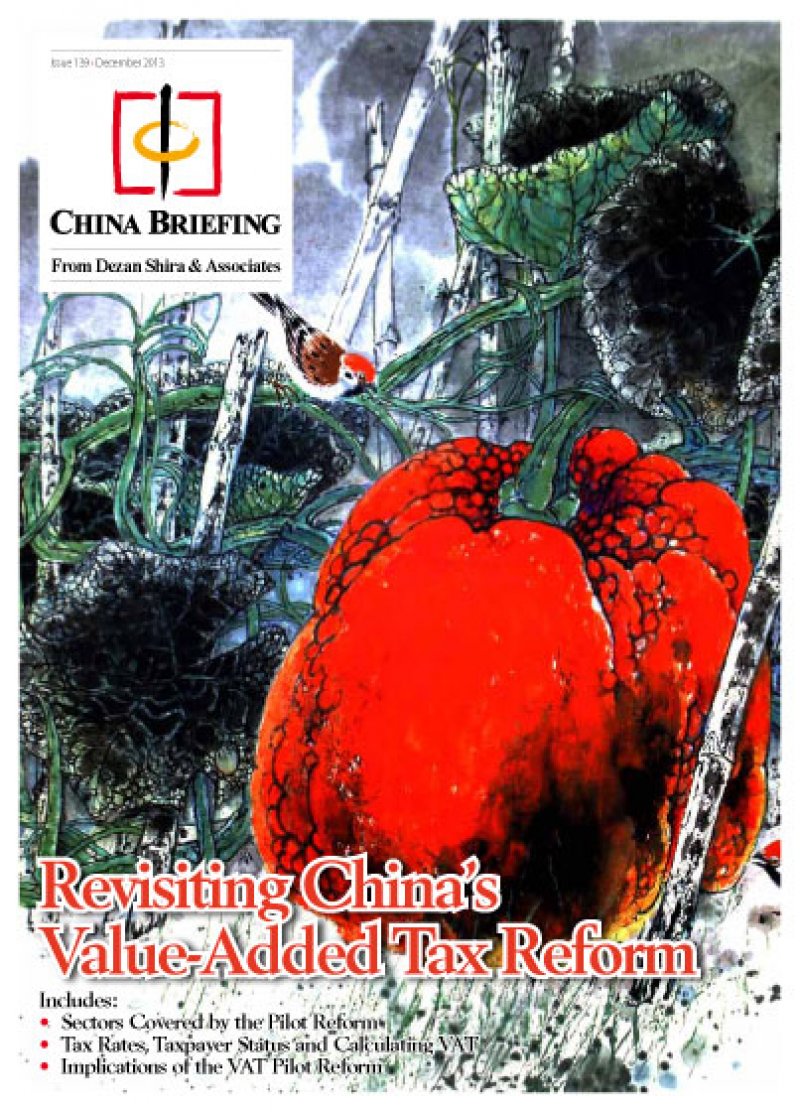
Revisiting China's Value-Added Tax Reform
Published: December 2013In this issue of China Briefing Magazine, we attempt to demystify some of the confusion revolving around China’s recent value-added tax reform by reintroducing the basics and discussing how the reform will impact your particular business. While this change has brought about tax savings for most enterprises, some enterprises have witnessed an increase in their tax burden. Further, businesses that were previously subject to business tax and now fall under the pilot reform may feel overwhelmed by this change.
No. of Pages: 12 pages
In this issue:
- Sectors Covered by the Pilot Reform
- Tax Rates, Taxpayer Status and Calculating VAT
- Implications of the VAT Pilot Reform
As China’s economy develops, its tax regime has also continued to evolve as the government strives to create a system that best promotes sustainable market growth. Both business tax (BT) and value-addedtax (VAT) are indirect taxes that have been implemented in China for decades. VAT income is shared between the central and local governments, with the majority going to the central government.
Meanwhile, the entire BT levied goes to the local governments. While this arrangement ensured a steady and sufficient stream of income for both the central and local governments, it also created high tax burdens for enterprises.
Prior to the reform, China’s VAT is imposed mainly on the sales and importation of goods and BT mainly on the provision of services. BT is levied on gross turnover with no deduction permitted for tax paid for the purchase of other goods or services. Meanwhile, VAT is considered a neutral tax, allowing businesses to offset certain VAT incurred in relevant purchases from their VAT liability. The two taxes are generally not mutually deductible. Replacing BT with VAT means unifying the difference in treatment between sales of goods and provision of services. This helps enhance the competitiveness of companies in the service sector and encourages them to upgrade their infrastructure.
While this change has brought about tax savings for most enterprises, some enterprises have witnessed an increase in their tax burden. Further, businesses that were previously subject to BT and now fall under the pilot reform may feel overwhelmed by this change. We attempt to demystify some of the confusions and complexities revolving around the reform by introducing the basics of the reform in this issue of China Briefing Magazine.

